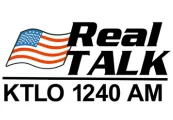
2016 was a challenging year for the Baxter County Quorum Court specifically in terms of stretching revenues in the County’s budget, a problem which has faced the county for a number of years. In part two of KTLO, Classic Hits and The Boot News series on upcoming challenges for Baxter County in 2017, we’ll look at some of the county’s needs, according to Baxter County Judge Mickey Pendergrass, and focus on one of the main revenue streams flowing into the County General Fund.
Many of the funding categories in the county budget are restricted by law as to their use. Other money only moves through the county treasury before being passed along to other entities such as the county library. It is in the $7.8 million County General Fund that members of the Quorum Court have the most discretion in terms of making spending decisions. Major sources of revenue for that fund are sales taxes, state turnback, and real and personal taxes. The sales tax is, by far, the largest revenue producer. County Treasurer Jenay Mize said that the sales tax “keeps us where we are. If that tax tanks, then just hold on”. She said that an increase in the millage rate or a sales tax increase would have to be seriously looked into at some point in the not-too-distant future. “It’s going to have to be one or the other,” Mize told the members of the Budget Committee.
Baxter County Judge Mickey Pendergrass says revenue will continue to be a large topic in 2017.
Listen:
right-click to download mp3
The sales tax rate for the county is at one percent with a combined state tax rate of six point percent, bringing the total to seven point five percent. There hasn’t been a sales tax rate increase in the county for quite some time, according to Baxter County Treasurer Jenay Mize.
Judge Pendergrass says buildings across the county need to be looked at, although funding from grant sources has eased the burden somewhat.
Listen:
In KTLO, Classic Hits and the Boot’s final story in the series of challenges facing Baxter county in 2017. We’ll look at Baxter County’s millage rate, which is next to the lowest in the state.
WebReadyTM Powered by WireReady® NSI










